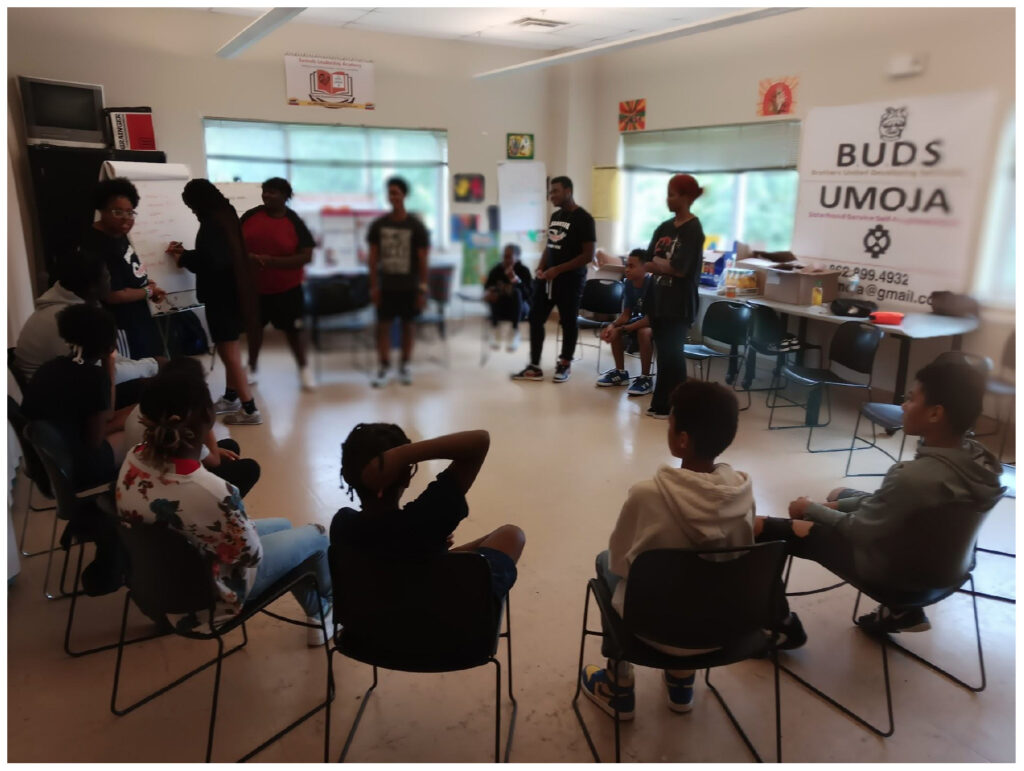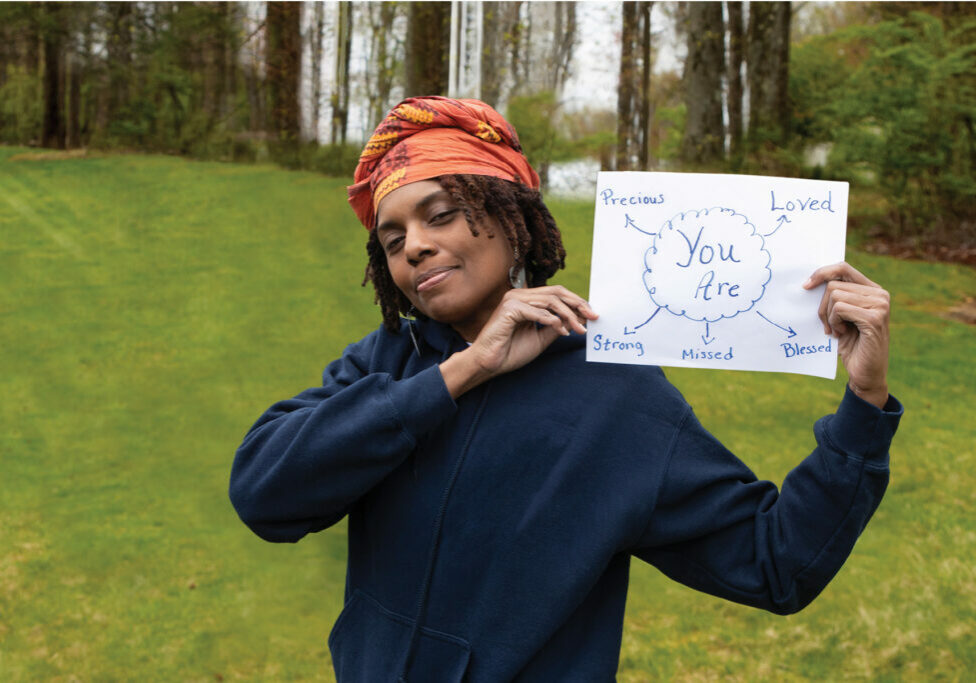When implementation falls short of the promise
By Shan Byrd
Fed up with a hodgepodge of recycled ideologies, many people are frustrated and confused about what “restorative justice practices” are. As a restorative justice specialist in New Jersey public schools and a professional development consultant with years of experience providing training on adverse childhood experiences (ACES) and other topics, I hear from educators and top administrators from all over the state who say that restorative justice practices don’t work.
The fault, however, does not lie with the principles of restorative justice, the biggest stumbling block lies in how restorative justice practices are—and are not—being implemented in our schools. Unless we conduct the practices with fidelity, we must stop terming what we are doing as “restorative justice practices.”
Restorative justice is a philosophy borrowed from indigenous cultures with a strong emphasis on building relationships rooted in the strength of community. In the U.S., the form of restorative justice that we borrow is tied closely to the traditions of the Ojibwe, a federation of First Nation people residing on the U.S.-Canadian border.
Oral history tells us that people working within Minnesota’s criminal system were searching for solutions to growing problems related to zero tolerance legal policies. After researchers witnessed how the Ojibwe—a self-governing nation with a low incidence of crime in their communities—dealt with conflict, they adopted many of their practices.
For most indigenous cultures what we term as restorative justice practices are a way of life, not a program. They are an actual practice of holistic community care. When authentically practiced in our schools and communities, restorative justice practices take their inspiration from these indigenous communities worldwide.
As someone who studies such peacemaking practices, I have traveled to South Africa and Rwanda to see firsthand what it looks like to restore from the atrocities of apartheid and genocide. In South Africa, there is a deep commitment to the idea of ubuntu—loosely translated as “I am because we are”—indicating that the mental, physical and emotional health of an individual is in a powerful symbiotic relationship with the well-being of the whole community. Similarly, in Rwanda, a country committed to deep healing, kindness and care for your neighbor is actually codified in their laws.
Coming to understand restorative justice practices
Restorative justice practices do not come in the form of a cookbook. It is not the kind of program that you just “plug in” and “press play.” Nor can you take a one-day workshop, return to your district and just turnkey it.
The first step is to humble yourself and get sound training on what restorative justice practices are. I strongly suggest aligning yourself with grassroots organizations possessing strong ties to indigenous communities. Be mindful to avoid the numerous organizations that seek to commodify the practice, seeing it as a means to garner federal and state funding and essentially co-opt a practice sacred to many indigenous communities.
Restorative justice practices are a genuine paradigm shift calling us to do deep introspective work. It’s a never-ending process that starts with you first unpacking the biases that challenge all of us. We are all steeped in a grind culture that demands a punitive response to nonconforming behavior. A restorative response to conflict seeks to understand the root of the problem and seek out holistic solutions aimed to heal as a collective.
People frequently tell me that their district’s approach to restorative justice practices is to “allow students to do whatever they want without consequences.” Restorative justice is not that! Such misguided strategies disrupt a school’s culture and climate by creating an inequitable environment.
Restorative justice is about building relationships to reduce the potential for harm in a community. Under a restorative approach, when harm does occur the needs of everyone in the community affected by the incident must be addressed with care.
Restorative justice practices begin with the adults
When I reflect on my earlier years of teaching, I remember wanting to have power. I wanted my students to sit when I said sit, stand when I said stand, and line up to walk down the hall exactly how I wanted them to. It took a lot of inner work for me to realize that I was not right—this was a form of oppression, and I didn’t want to leave that mark on the world.
To truly embrace restorative justice practices we must start with the adults because children are not drivers of academic culture. Restorative justice practices are not about “fixing” children. Our educational systems are built on a hierarchy where the government is at the top, followed by top level and mid-level administrators. Educators and children are generally at the bottom of the hierarchy. Depending upon a parent or care giver’s awareness of their power, they can show up at any point of this edu-political framework.
Administrators often drive initiatives and consequently have a responsibility to ensure that they and their staff members grow in their understanding of authentic restorative justice practices. When restorative justice practices implemented before school leaders and staff are ready, there is a danger that the process will devolve into top-down directives. This minimizes the voices that make up the whole school community and is one of the main reasons why so many educators complain that restorative justice does not work!
Relationships and shared power
A restorative approach seeks to create relationships where power is shared. It is philosophy that takes into account that all humans inherently possess power despite their social ranking. This is not to negate the importance of leadership because we all are called to lead in the various domains of our lives. But a leader working through a restorative lens understands that their role is not to manage or control the behavior of others.
Highly effective educational leaders who embrace restorative justice practices center uplifting the humanity of their stakeholders through shared values and expectations. They are hyper-focused on collaboration rather than control.
On several occasions, I have spoken with heartbroken administrators and educators who try to understand what went wrong in their restorative justice implementation process. Unfortunately, by the time they contact me a lot of harm has been caused so they ask “What do we do now?” My answer is generally to stop until they can commit fully to doing the work with fidelity, are properly trained and have adequate funding.
In the meantime, we can focus on some of the foundational work that can aid in the proper implementation of restorative justice practices. We can examine our interactions with our colleagues and the students we come into contact with every day. We can focus on creating mutually respectful, healing spaces where we really see each other and listen to each other.
Restorative justice practices should look like community valuing itself. It should look like the tenets of restorative justice, which are dignity, respect, and a sense of compassion and grace for others. It should look like seeing people as equally human and breaking down hierarchical structures.
It is time to have honest conversations on how to properly implement restorative justice practices within our schools. What we are currently seeing in many schools are not restorative justice practices. When we blame restorative justice rather than the way we are implementing it, we dishonor the indigenous people from whom we are borrowing the tradition.
Adopting a restorative justice approach toward education takes time and consistency. When implemented with care it is immensely gratifying to engage in a sustainable philosophy that elevates each of us: students, school employees, administrators and parents. It enables us to treat each other with dignity, respect, compassion and grace.

Student led peace keeping practices. Courtesy of Paterson’s BUDS and Umoja community based organization.
Shan Byrd is a restorative justice specialist working in New Jersey’s public schools and a consultant in the NJEA Professional Development and Instructional Issues Division. She can be reached at sbyrd@njea.org.
Restorative justice takes time
Proper implementation of restorative justice practices takes between five to nine years. Time is a rationed commodity in education, so it is vital for school districts to nurture the practice with patience and consistency.
In 2018, I had the opportunity to visit Skinner Middle School in Denver, Colorado. There I witnessed the power of restorative justice when implemented with great care. At the time, the middle school was in its 10th year applying the practices, and it was clear that they were committed to creating a harmonious school culture. Skinner was not perfect, but it most certainly was peaceful!
Imagine a learning environment where the care of the entire school community is prioritized. Practical structures are in place to support the needs of both students and staff members. A place where the larger community and staff members collaborate regularly to create strong home and school bonds.
I was delighted to meet a parent who actively volunteered to support the restorative justice efforts at the school. I was touched to learn that the students tenderly referred to their peers, with conviction, as family members.
My most memorable interaction was with a 12-year-old student who recently transferred to the school. The student proudly stated, “At my old school I would get into a lot of trouble, but here I don’t do those things because it’s peaceful here.”
When I asked him what made Skinner more peaceful than his former school he smiled widely and stated, “The people here work hard to show you that they really care.”
This positive school atmosphere was supported by administrators who understood that restorative justice had the ability to magnify academic excellence. For Skinner to sustain a successful school rooted in restorative justice took years of patience, an investment of time for the school community to cultivate relationships, a willingness to share power, a financial commitment from the district, and the creation of systems to reduce the possibility of harm when conflict occurs.
Recommended reading
This article is the introduction to future articles exploring the implementation of restorative justice practices. In the meantime, I recommend reading The Little Book of Restorative Justice in Education: Fostering Responsibility, Healing, and Hope In Schools (Revised Version), by Katherine Evans and Dorothy Vaandering.
